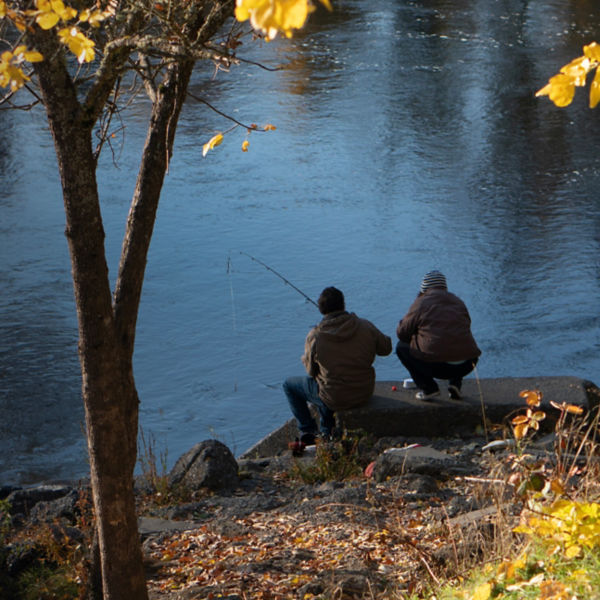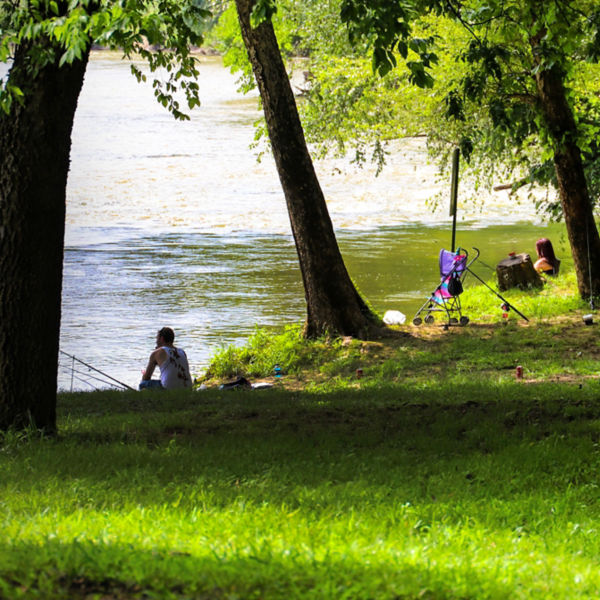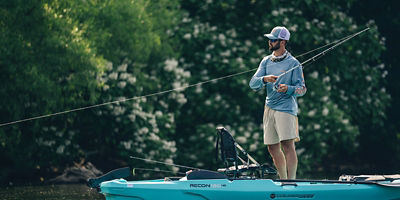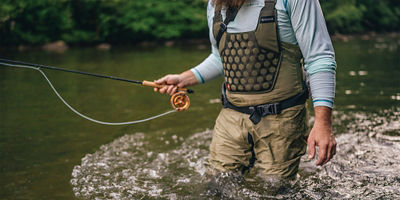Casting Tips
The right bait or lure won’t help if you can’t cast—a skill that also applies to most other types of angling. But a few small technique tips can get your line a lot farther, and closer to your targets.
Rod grip
How you hold your rod comes down to personal preference and what feels most comfortable. But always use your dominant hand. Some anglers place their index and middle finger in front of the reel and other two behind; others just their index finger in front of the reel; some three fingers in front; and others all of them. But you at least want your index finger in front of the reel so it can hold the line after you flip the bail and begin your cast.
Readying the line
Hold your rod horizontal, so the reel is below the rod toward the ground. Then reel in your line slowly (with your non-dominant hand) until only 6 to 8 inches of line is hanging off your rod tip. Next, rotate the bail so the line is at its closest point to the rod. Once there, pull some line off the roller and barely lay it across the inside of your index finger, holding it against the rod’s grip. (Note: Don’t use multiple fingers for this.) Then, use your free (non-dominant) hand to flip open the bail so the line will unfurl when you make your cast.
Casting
There are three main types of casts you can use: an overhand cast, side-cast or roll cast, which is often used to dodge mangroves, and/or “skip” your lure underneath low-lying bushes. (For more power and control on each, place your non-dominant hand on the butt of the rod.) Spot where you want your lure to go, noting both the distance and location, and cast straight toward it.
Side-cast: Hold the rod horizontally off to your side and bring it back to load it up parallel to the ground. Then fling it forward, while letting the line release from your index finger.
Overhand cast: Do the same thing, only bring the rod tip just past vertical up over your head before whipping it forward with a forward-throwing motion and releasing the line with your index finger (as soon as your arm is at about a 45-degree angle).
Roll cast: Point your rod tip down close to the water and give it a low, quick flip, using a circular motion on the tip to give the lure a low trajectory. For all three, as soon as your lure hits the water use your non-dominant hand to flip the bail back 180 degrees so you can begin reeling.
Fishing line
For fishing trout, bass and other common target species found throughout most of the country, load your spinning reel with 6-pound test as a go-to main line weight (though some prefer as light as 4-pound for smaller species or up to 8-pound for larger fish). Monofilament is a great choice, as are such other lines as fluorocarbons. Some anglers also enjoy having extra spools with different weight lines so they can switch back and forth easily.
Lures
Thanks to their design, spinning reels are great for casting lures of all weights and sizes—especially lighter lures and even surface baits as there is little resistance as the line unspools. Two of the most popular are spinners and spoons, which work great for spinning combos in the majority of the country's lakes, ponds and rivers. Consider Mepps spinners, hootchies (squid-type lures), and Rooster Tail spinners.
A few hints: To change your lure’s depth in lakes, let it sink different lengths of time before reeling it in; vary your retrieval speed (for spoons, let it stop and start so it flutters); and note of what types of retrieving (reeling) action gets the most strikes. Also, casting and reeling in streams and rivers is similar to how you would do it in lakes, only oftentimes with more obstacles and potential snags to avoid. One trick: Cast upstream or across the current and then let your lure drift downstream a bit, allowing the current to create some “fish” action as well, before reeling it back in once it gets downstream of you.











































































